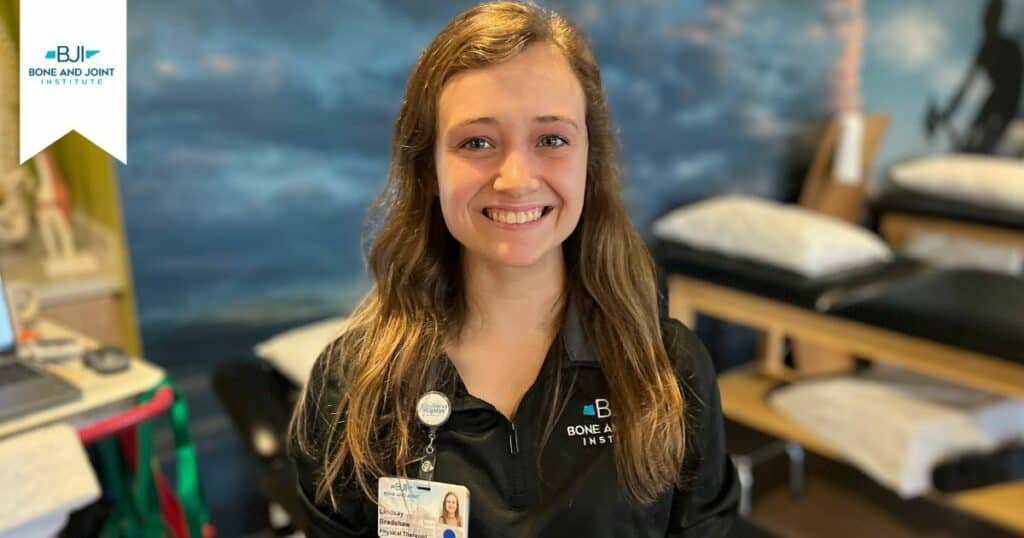Spring Safety Steps with Dr. Ronald Derr
Published: April 9, 2025
Originally published in the Williamson Herald —
Do warmer weather and longer days have you eager to pick up a new outdoor hobby or perhaps revisit your 2025 fitness goals? Spring is the perfect time to reconnect with nature, which is why many people take up walking or running. However, it’s essential to use the proper preventive measures to reduce the risk of overuse injuries, especially in and around the Achilles tendon area.
With nearly 30 years of experience at Bone and Joint Institute of Tennessee, Dr. Ronald Derr, an orthopaedic surgeon specializing in foot and ankle surgery, offers preventative tips and treatment methods for common overuse injuries.
“Most overuse injuries happen when people decide to pick up a new activity too quickly or jump back into an exercise routine without the right precautions,” said Dr. Derr.
Overuse injuries can occur in both the tendons and bones of the affected area and are more common when there is a sudden change in activity. Those who decide to run a half marathon, 5K, or even start taking high-impact fitness classes without proper training are putting themselves at higher risk for developing overuse injuries.
Preventative Methods
However, by being smart and utilizing preventive measures, people can reduce their risk of injury while remaining active.
“Ensuring that you have proper footwear is an easy way to protect your feet and ankles,” said Dr. Derr. “Worn-down tennis shoes do not provide adequate support for your feet as they take the impact of repeated running.”
He added that even new tennis shoes should be broken in by walking before embarking on more high-impact training.
While many love the mental and physical benefits of running, transitioning to a cross-training program that includes lower-impact workouts such as biking or swimming can also be a good way to give your body the time it needs to recover.
“Also, opt for a change in scenery and try to vary the type of terrain on which you train,” said Dr. Derr. “Hiking trails and softer surfaces can be easier on your feet than running on hard streets and pavement.”
Overall, Dr. Derr advises people to take it slow when starting a new fitness journey and remember to stretch. The Achilles tendon is the second strongest tendon in the body and can often get too tight, generating excess force on the foot and ankle. Stretching your calf and Achilles tendon will reduce the risk of foot injuries, including ruptures, which can often happen unexpectedly.
Injuries and Treatment Methods
When tendons, such as the Achilles, are overused, they can become inflamed and cause pain.
“When a patient experiences pain in the Achilles tendon that lasts more than a few days and is causing them to limp or the area to swell, they most likely have an overuse injury such as tendonitis,” said Dr. Derr.
The good news is that overuse injuries rarely require surgery and can often be treated using conservative methods like RICE Therapy, an acronym standing for rest, ice, compression and elevation. Anti-inflammatories, such as Advil, can also be helpful for pain relief.
Stress fractures, which affect the bone, are another common type of overuse injury newly active people can experience. Unlike tendon or muscle injuries, stress fractures can be harder to pinpoint in terms of pain. Stress fractures are most commonly diagnosed with suspicion and proven with an MRI, Dr. Derr added. They, too, are mainly treated using conservative methods, although it is always important to monitor Vitamin D levels to ensure sufficient calcium levels.
“The Achilles can be a difficult area to soothe, so we may recommend immobilizing it in a boot for a while if pain persists,” said Dr. Derr. “You do not have to stop training, but we suggest modifying activities or cross-training to avoid irritating the area while you heal.”
If you are experiencing pain, swelling or other symptoms lasting more than a few days, It is crucial to visit an orthopaedist to avoid further injury such as an Achilles tear or rupture. Recovery times vary from a week up to a few months, but the providers at Bone and Joint Institute will get you on track to staying active and pain-free this spring.
“The main thing is to be patient. Recovery from overuse injuries can take longer than expected, but they do not cause any major long-term effects,” said Dr. Derr. “You can treat them, recover and get back to the activities you enjoy doing this spring.”
For more information or to schedule an appointment, click here.
Spring Safety Steps with Dr. Ronald Derr
Originally published in the Williamson Herald —
Do warmer weather and longer days have you eager to pick up a new outdoor hobby or perhaps revisit your 2025 fitness goals? Spring is the perfect time to reconnect with nature, which is why many people take up walking or running. However, it’s essential to use the proper preventive measures to reduce the risk of overuse injuries, especially in and around the Achilles tendon area.
With nearly 30 years of experience at Bone and Joint Institute of Tennessee, Dr. Ronald Derr, an orthopaedic surgeon specializing in foot and ankle surgery, offers preventative tips and treatment methods for common overuse injuries.
“Most overuse injuries happen when people decide to pick up a new activity too quickly or jump back into an exercise routine without the right precautions,” said Dr. Derr.
Overuse injuries can occur in both the tendons and bones of the affected area and are more common when there is a sudden change in activity. Those who decide to run a half marathon, 5K, or even start taking high-impact fitness classes without proper training are putting themselves at higher risk for developing overuse injuries.
Preventative Methods
However, by being smart and utilizing preventive measures, people can reduce their risk of injury while remaining active.
“Ensuring that you have proper footwear is an easy way to protect your feet and ankles,” said Dr. Derr. “Worn-down tennis shoes do not provide adequate support for your feet as they take the impact of repeated running.”
He added that even new tennis shoes should be broken in by walking before embarking on more high-impact training.
While many love the mental and physical benefits of running, transitioning to a cross-training program that includes lower-impact workouts such as biking or swimming can also be a good way to give your body the time it needs to recover.
“Also, opt for a change in scenery and try to vary the type of terrain on which you train,” said Dr. Derr. “Hiking trails and softer surfaces can be easier on your feet than running on hard streets and pavement.”
Overall, Dr. Derr advises people to take it slow when starting a new fitness journey and remember to stretch. The Achilles tendon is the second strongest tendon in the body and can often get too tight, generating excess force on the foot and ankle. Stretching your calf and Achilles tendon will reduce the risk of foot injuries, including ruptures, which can often happen unexpectedly.
Injuries and Treatment Methods
When tendons, such as the Achilles, are overused, they can become inflamed and cause pain.
“When a patient experiences pain in the Achilles tendon that lasts more than a few days and is causing them to limp or the area to swell, they most likely have an overuse injury such as tendonitis,” said Dr. Derr.
The good news is that overuse injuries rarely require surgery and can often be treated using conservative methods like RICE Therapy, an acronym standing for rest, ice, compression and elevation. Anti-inflammatories, such as Advil, can also be helpful for pain relief.
Stress fractures, which affect the bone, are another common type of overuse injury newly active people can experience. Unlike tendon or muscle injuries, stress fractures can be harder to pinpoint in terms of pain. Stress fractures are most commonly diagnosed with suspicion and proven with an MRI, Dr. Derr added. They, too, are mainly treated using conservative methods, although it is always important to monitor Vitamin D levels to ensure sufficient calcium levels.
“The Achilles can be a difficult area to soothe, so we may recommend immobilizing it in a boot for a while if pain persists,” said Dr. Derr. “You do not have to stop training, but we suggest modifying activities or cross-training to avoid irritating the area while you heal.”
If you are experiencing pain, swelling or other symptoms lasting more than a few days, It is crucial to visit an orthopaedist to avoid further injury such as an Achilles tear or rupture. Recovery times vary from a week up to a few months, but the providers at Bone and Joint Institute will get you on track to staying active and pain-free this spring.
“The main thing is to be patient. Recovery from overuse injuries can take longer than expected, but they do not cause any major long-term effects,” said Dr. Derr. “You can treat them, recover and get back to the activities you enjoy doing this spring.”
For more information or to schedule an appointment, click here.
Published: April 9, 2025










